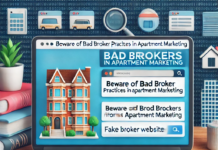“Content is king” is a phrase that gained prominence over the last few years. Then, like many digital marketing trends, it gained derision, then a backlash to the backlash. Yet, anyone involved in digital marketing over the last several years knows content is incredibly important for driving traffic. However, creating useful content remains difficult for most businesses. In particular, SMB business already struggle to find resources for digital marketing. Does content still drive small business SEO results?
As competition for valuable search traffic increased, digital marketing experts sought new opportunities to get an edge on their competition. For example, link building! These techniques ranged from legitimate-yet-somewhat-artificial “white hat” tactics to shadier, overtly manipulative “black hat” strategies. White hat tactics included directory listings and online press release submissions. Conversely, black hat tactics included leveraging link farms, sham URLs, and low-cost laborers creating links and clicks through brute force.
Search engines deliver the best possible results to users. Of course, they do so in order to sell their own ads more effectively. So, Google and others remain motivated to constantly update their algorithms filtering new SEO techniques.
A decade-plus into this cat and mouse game, what has resulted is an amazingly smart set of search algorithms. This is fantastic for the greater good of humanity. Search results provide the right information at our fingertips, instantly. But, this is not-so-fantastic for companies looking to get an edge in search results. Manufactured credibility is rapidly becoming a thing of the past… so now what?
As almighty Google becomes smarter and smarter, the methods that SEO experts previously used have evolved and many became obsolete. For example, a few years ago, SEO broadly fell into two complementary segments: on site SEO and off site SEO.
On Site SEO Activities
First, we would perform “On site” SEO activities. On site SEO structured your website such that search engines understand what it is you’re all about. This includes the tried-and-true “SEO 101” tactics like proper page titles, header tags, and meta-tags. This also includes intelligent structuring of content to appropriately weight pages within the site hierarchy.
Off Site SEO Activities
Next, “Off site” SEO activities. Off site SEO convinced search engines that your site was a credible source of information. Using any and every means possible, SEO teams worked to get links to content from as many sites as possible. The volume, and more importantly, respectability, of these sources was widely accepted to have a trickle-down effect on the relevance bestowed upon your own site. The more relevant the site appeared, the higher the site rises in the SERPs (search engine result pages).
Does Content Help Small Business SEO?
That brings us back to the cliché, content is king. How do you convince Google of your expertise? Generate signals that you are, in fact, useful and credible. No longer can SEO teams produce results by tricking the algorithm. Now, SEO teams must create and curate content that truly engages readers. Content drives small business SEO by aligning with the objectives of search algorithms. Deliver good content that helps them sell advertising and helps visitors will find you.
So now for the cold hard reality…this is much more difficult than prior SEO tactics.
It’s not that companies cannot write their own content. When they do, their expertise is obvious and the voice is authentic. It’s very often the purest, best content. It’s that more often than not, the employees or stakeholders with the knowledge and writing ability just don’t have the time. These are typically members of the same core team that are juggling many other aspects of the day-to-day business. Whether it’s on day one or six months into a content marketing plan, other very real priorities inevitably trump writing blogs, posts, tweets, and white papers.
This leaves digital marketing professionals in a bit of a pickle. Clients want more than consultative advice on what they should do, they need a team to take the work off of their plate and execute. At the same time, marketing experts know what their clients should do, but without the expert business knowledge.
If you have the time, resources, and expertise to create and promote great content internally that’s a great way to drive relevant traffic that will help grow your business.
However, most SMBs don’t have these resources. So how can you think about executing on content creation and promotion if you don’t have this capacity and expertise in-house?
Content Driven Small Business SEO Plan
Here’s a 10-step plan we propose to overcoming the traditional challenges of content development.
- Define the interests of the target audience based on an initial understanding of the business. Use past sales and marketing data, current analytics, keyword research, and social listening techniques to take a “best first guess” at engaging content.
- Ensure that websites, social media accounts, and other digital assets are correctly configured to track everything that can be tracked.
- Test assumptions without wasting too much time on generating in-house content. Curate content from external sources through influencers or paid sources, and leverage this content on site and across social platforms.
- Perform independent research on the target topics for content.
- Create a list of questions to be asked of the client’s appropriate subject matter expert(s). The list should be no more than 5-10 questions, yet provides more than enough material for a long-form piece of content.
- Schedule and conduct an interview with the client. Record the session if possible. Our mantra is to treat the client’s time as gold – and asking them to repeat or clarify what they’ve said because we did not take good notes is not acceptable.
- Author long-form content (such as blog posts or content pages) with the knowledge gained from the interview, augmented with additional research. Optimize the content using traditional “on site” SEO tactics.
- Provide the content to the expert for review, offering (but not requiring) a time to discuss any requested changes.
- Publish the long form content – and mine it aggressively as a source for any number of shorter posts, tweets, or other content items.
- Promote the content aggressively. Social media, social boosting, influencer outreach, and paid search are just a few ways to push content in front of the consumer.
After following these 10 steps, measure results, rinse and repeat as required.
As the transition from traditional SEO towards content marketing continues, strategies like these will become increasingly important to an effective digital marketing program. We would love to hear how others are overcoming the challenge of developing and leveraging high-quality and search-friendly original content.





